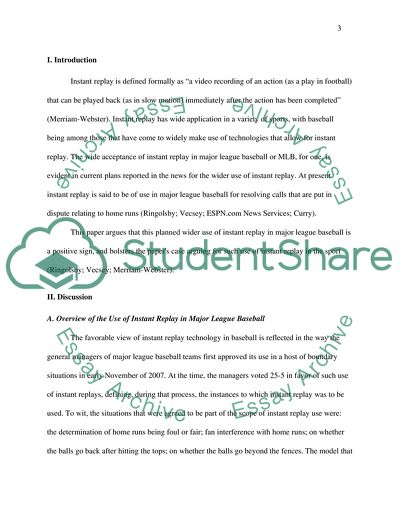Cite this document
(Instant Replay in Major League Baseball Research Paper, n.d.)
Instant Replay in Major League Baseball Research Paper. Retrieved from https://studentshare.org/sports-and-recreation/1773518-instant-replay-in-baseball
Instant Replay in Major League Baseball Research Paper. Retrieved from https://studentshare.org/sports-and-recreation/1773518-instant-replay-in-baseball
(Instant Replay in Major League Baseball Research Paper)
Instant Replay in Major League Baseball Research Paper. https://studentshare.org/sports-and-recreation/1773518-instant-replay-in-baseball.
Instant Replay in Major League Baseball Research Paper. https://studentshare.org/sports-and-recreation/1773518-instant-replay-in-baseball.
“Instant Replay in Major League Baseball Research Paper”, n.d. https://studentshare.org/sports-and-recreation/1773518-instant-replay-in-baseball.


